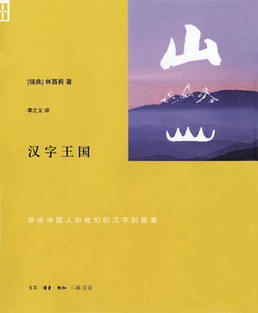China: Empire of Living Symbols
China: Empire of Living Symbols
By ZHOU JIN
ONE early summer day Cecilia Lindqvist was cycling beside a lake in the oldest part of Beijing. She noticed a garden outside an old house, perhaps no bigger than a king-size bed but planted with lovely roses, cacti and orchids… She hopped down to chat with the family about their little Garden of Eden.
“Who made this garden?” she asked.
The father smiled proudly, and pointed at his nose: “It was me.”
Swedish sinologist Cecilia Lindqvist shares this anecdote in China: Empire of Living Symbols, to explain that the Chinese character “self” originally meant “nose.” Chinese usually point to the nose when referring to themselves, whereas in Sweden, people always touch their chest. No one noticed or thought about the difference, but Lindqvist did and recorded it.
Foreigners find it hard to learn Chinese characters; and even the Chinese sometimes forget how this ancient language originated from drawn images. In this book the author shows over 200 characters, and traces the evolution of their forms from the Stone Age to modern times. These characters, a group of earliest Chinese characters, have a close relation to, or describe, the concepts of body, house, utensil, silk and fiber, livestock, farm implement, transportation and road. Lindqvist explains how these originated, linking them to the life and customs of ancient China.

The book, a Chinese translation of the original, is organized into eight categories of stand-alone stories. The bite-size format makes it easy to dip into, just right for the subway or when waiting for friends to show up.
Cecilia Lindqvist is a professional scholar of Chinese and was a pupil of Bernhard Karlgren, one of the greatest sinologists of the 20th century. A student at Peking University between 1961 and 1962, she returned to China in 1973 and has been here dozens of times since. When teaching Chinese in Sweden, she found that explaining the original form, and later the development of each character, helped students understand and memorize it more easily. It also gave them insight into Chinese life.
Chinese characters, especially in unabbreviated form or those carved on bronzes and oracle bones, provide a window between our modern world and that of the ancestors.
Many of the stories recounted in China: Empire of Living Symbols are based on the author’s personal observation and experience in China. The subject matter ranges from culture, customs and history to production, building a picture of the ancestors’ lives and thereby explaining how a character was created.
We can learn why a character looks like it does, what each stroke represents, its relationship to life as it used to be lived, and its evolution into a modern style. Some characters are particularly interesting to foreigners. The mouth 口 depicts an open mouth laughing out loudly. Later the corners of the mouth disappeared, and the character was used to describe anything square. In combination with the character for “door” it means doorway or exit.
Another example is rain 雨. Rain comes from clouds, so in this character we see a cloud at the top and four drops of rain below. The character for thunder 雷 takes things a step further, depicting rain falling on a checkerboard field which could be seen anywhere in agrarian society. Thunder is often accompanied by lightning, which flashes across the sky and hits the field. So the character lightening 电 adds a long tail to the thunder. These three characters illustrate the process of character forming – from simple to complex; at the beginning people created characters to describe familiar phenomena, then modified the existing characters to convey more complex ideas.
There is no shortage of books about Chinese characters, but this is surely the most interesting and visually rich, using a host of images of oracle bone carving and jade and bronze inscription to illustrate the evolution of pictographs to their modern form. These have greatly contributed to the book’s warm reception and it has been translated from Swedish into English, French, German, Norwegian and Finnish. And now Chinese!
Despite her academic background, Lindqvist is not afraid of writing for the layperson. The little tales and detailed explanation teach us the close relation between man and language.
China: Empire of Living Symbols was 15 years in the making, her publication on the guqin (Chinese zither) took another 15, and a work on the art of papercutting is now in progress. With any luck, readers won't have to wait another 15 years.
Services
Economy
- Eco-agriculture and Eco-tourism Power Nanchang’s Green Development
- Balance Environmental Protection and Economic Prosperity – Nanchang Looks to European Technology for Green Development
- Sustainable Growth Requires Wiser Energy Use
- Chinese Economy: On the Path of Scientific Development
- China's Economy over the Last Ten Years

